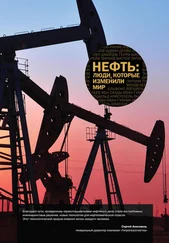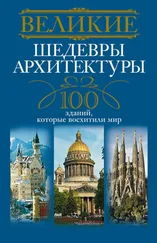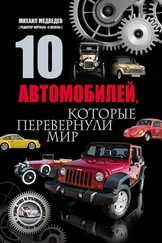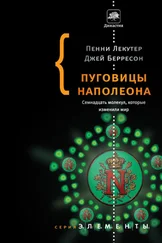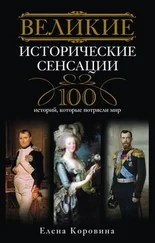Van Arnam, E. B., Ruzzini, A. C., Sit, C. S. et al. ‘Selvamicin, an Atypical Antifungal Polyene from Two Alternative Genomic Contexts’, Proceedings of the National Academy of Sciences of the United States of America 113 (2016), pp. 12940—12945.
Wainwright, M., Laswd, A. & Alharbi, S. ‘When Maggot Fumes Cured Tuberculosis’, Microbiologist March 2007 (2007), pp. 33–35.
Watanabe, M. ‘Anhydrobiosis in Invertebrates’, Applied Entomology and Zoology 41 (2006), pp. 15–31.
Whitaker, I. S., Twine, C., Whitaker, M. J. et al. ‘Larval Therapy from Antiquity to the Present Day: Mechanisms of Action, Clinical Applications and Future Potential’, Postgraduate Medical Journal 83 (2007), pp. 409–413.
Wilson, E. O. Biophilia, Harvard University Press, Cambridge, Mass, 1984.
World Economic Forum, Ellen MacArthur Foundation and McKinsey & Company. 2016. ‘The New Plastics Economy Rethinking the Future of Plastics’, sourced in 2017 from https://www.ellenmacarthurfoundation.org/assets/downloads/EllenMacArthurFoundation_TheNewPlasticsEconomy_Pages.pdf
Yang, Y., Yang, J., Wu, W. M. et al. ‘Biodegradation and Mineralization of Polystyrene by Plastic-Eating Mealworms: Part 1. Chemical and Physical Characterization and Isotopic Tests’, Environmental Science & Technology 49 (2015), pp. 12080—12086.
Yates, D. (2009). ‘The Science Suggests Access to Nature Is Essential to Human Health’, sourced in 2017 from https://news.illinois.edu/blog/view/6367/206035
Wodsedalek, J. E. ‘Five Years of Starvation of Larvae’, Science 1189 (1917), pp. 366—7, http://science.sciencemag.org/content/46/1189/366
Zhang, C.-X., Tang, X.-D. & Cheng, J.-A. ‘The Utilization and Industrialization of Insect Resources in China’, Entomological Research 38 (2008), pp. S38—S47.
ЧАСТЬ 9
Insects and Us: What’s Next? and Afterword Brandt, A., Gorenflo, A., Siede, R. et al. ‘The Neonicotinoids Thiacloprid, Imidacloprid, and Clothianidin Affect the Immunocompetence of Honeybees (Apis mellifera L.)’, Journal of Insect Physiology 86 (2016), pp. 40–47.
Byrne, K. & Nichols, R. A. ‘Culex pipiens in London Underground Tunnels: Differentiation Between Surface and Subterranean Populations’, Heredity 82 (1999), pp. 7—15.
Dirzo, R., Young, H. S., Galetti, M. et al. ‘Defaunation in the Anthropocene’, Science 345 (2014), pp. 401–406.
Dumbacher, J. P., Wako, A., Derrickson, S. R. et al. ‘Melyrid Beetles (Choresine): A Putative Source for the Batrachotoxin Alkaloids Found in Poison-Dart Frogs and Toxic Passerine Birds’, Proceedings of the National Academy of Sciences of the United States of America 101 (2004), pp. 15857—15860.
Follestad, A. ‘Effekter av kunstig nattbelysning på naturmangfoldet – en litteraturstudie’, NINA Rapport 1081. 89 pages (2014).
Forbes, A. A., Powell, T. H. Q., Stelinski, L. L. et al . ‘Sequential Sympatric Speciation across Trophic Levels’, Science 323 (2009), pp. 776–779.
Garibaldi, L. A., Stefan-Dewenter, I., Winfree, R. et al. ‘Wild Pollinators Enhance Fruit Set of Crops Regardless of Honeybee Abundance’, Science 339 (2013), pp. 1608–1611.
Gough, L. A., Sverdrup-Thygeson, A., Milberg, P. et al. ‘Specialists in Ancient Trees Are More Affected by Climate than Generalists’, Ecology and Evolution 5 (2015), pp. 5632–5641.
Goulson, D. ‘Review: An Overview of the Environmental Risks Posed by Neonicotinoid Insecticides’, Journal of Applied Ecology 50 (2013), pp. 977–987.
Hallmann, C. A., Sorg, M., Jongejans, E. et al. ‘More Than 75 Per Cent Decline Over 27 Years in Total Flying Insect Biomass in Protected Areas’, PLOS ONE 12 (2017), e0185809.
IPBES. ‘Summary for Policymakers of the Assessment Report of the Intergovernmental Science-Policy Platform on Biodiversity and Ecosystem Services on Pollinators,
Pollination and Food Production’, Secretariat of the Intergovernmental Science-Policy Platform on Biodiversity and Ecosystem Services, Bonn, Germany (2016).
McKinney, M. L. ‘High Rates of Extinction and Threat in Poorly Studied Taxa’, Conservation Biology 13 (1999), pp. 1273–1281.
Morales, C., Montalva, J., Arbetman, M. et al. 2016. ‘Bombus dahlbomii. The IUCN Red List of Threatened Species 2016: e.T21215142A100240441’, sourced in 2017 from http://dx.doi.org/10.2305/IUCN.UK.2016—3.RLTS.T21215142A100240441.en
Myers, C. W., Daly, J. W. & Malkin, B. ‘A Dangerously Toxic New Frog (Phyllobates) Used by Embera Indians of Western Colombia with Discussion of Blowgun Fabrication and Dart Poisoning’, Bulletin of the American Museum of Natural History 161 (1978), pp. 307–366.
Pawson, S. M. & Bader, M. K. F. ‘LED Lighting Increases the Ecological Impact of Light Pollution Irrespective of Color Temperature’, Ecological Applications 24 (2014), pp. 1561–1568.
Rader, R., Bartomeus, I., Garibaldi, L. A. et al. ‘Non-Bee Insects Are Important Contributors to Global Crop Pollination’, Proceedings of the National Academy of Sciences 113 (2016), pp. 146–151.
Rasmont, P., Franzén, M., Lecocq, T. et al. ‘Climatic Risk and Distribution Atlas of European Bumblebees’, BioRisk 10 (2015).
Säterberg, T., Sellman, S. & Ebenman, B . ‘High Frequency of Functional Extinctions in Ecological Networks’, Nature 499 (2013), pp. 468—70.
Schwägerl, C . ‘Vanishing Act. What’s Causing the Sharp Decline in Insects, and Why It Matters’, sourced in 2017 from https://e360.yale.edu/features/insect_numbers_declining_why_it_matters (2017).
Thoresen, S. B. ‘Gendrivere – magisk medisin eller villfaren vitenskap?’ sourced in 2017 from http://www.bioteknologiradet.no/2016/06/gen-drivere-magisk-medisineller-villfaren vitenskap/ (2016).
Thoresen, S. B. & Rogne, S. ‘Vi kan nå genmodifisere mygg så vi kanskje kvitter oss med malaria for godt’, sourced in 2017 from https://www.aftenposten.no/viten/i/4m9o/Vi-kan-nagenmodifisere-mygg-sa-vi-kanskje-kvitter-oss-med-malariafor-godt (2015).
Tsvetkov, N., Samson-Robert, O., Sood, K. et al. ‘Chronic Exposure to Neonicotinoids Reduces Honeybee Health near Corn Crops’, Science 356 (2017), p. 1395.
Vindstad, O. P. L., Schultze, S., Jepsen, J. U. et al. ‘Numerical Responses of Saproxylic Beetles to Rapid Increases in Dead Wood Availability following Geometrid Moth Extraordinary Insects.
ПРОЧАЯ ИСПОЛЬЗОВАННАЯ ЛИТЕРАТУРА
Outbreaks in Sub-Arctic Mountain Birch Forest’, PLOS ONE 9 (2014).
Vogel, G. ‘Where Have All the Insects Gone?’ sourced in 2017 from http://www.sciencemag.org/news/2017/05/where-haveall-insects-gone (2017).
Wiggins, Glenn B. (1927–2013). http://www.zobodat.at/biografien/Wiggins_Glenn_B_BRA_42_0004—0008.pdf
Wilson, E. O. ‘The Little Things That Run the world (The Importance and Conservation of Invertebrates)’, Conservation Biology 1 (1987), pp. 344—6.
Woodcock, B. A., Bullock, J. M., Shore, R. F. et al. ‘Countryspecific Effects of Neonicotinoid Pesticides on Honeybees and Wild Bees’, Science 356 (2017), p. 1393.
Zeuss, D., Brandl, R., Brändle, M. et al. ‘Global Warming Favours Light-coloured Insects in Europe’, Nature Communications 5 (2014), Article No. 3874.

Конец ознакомительного отрывка
Купить книгу



